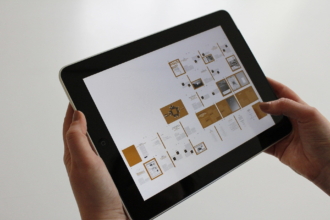New technology allows businesses to automate their work processes in powerful and creative new ways. Though some people fear that automation means robots taking over the workplace, in practice, it works in tandem with human input and is widely applicable to all sorts of processes and industries.
Automation can significantly benefit the construction industry in particular by helping businesses get complex, interdependent tasks done efficiently and effectively. But automation in construction isn’t just about big machinery and sophisticated robotics; it also plays a key role in digital project management and workflow processes. In fact, some estimates say as much as 44 percent of the entire construction process can be automated.
By relying more on automation innovations, construction companies have found ways to streamline logistics within the industry. Let’s look at how automation has been folded into construction processes — and how your business can get the most out of these advanced tools.
How the construction process has evolved
The construction industry constantly seeks ways to save money and complete massive tasks as easily as possible — all while strictly adhering to safety regulations. There’s also been a substantial push in recent years toward using more sustainable materials and building processes, creating more opportunities — and a few new complications.
The financial impact of the COVID-19 pandemic on construction has been substantial, due in part to delays caused by ongoing supply chain issues. Higher costs for construction materials, which jumped 17 percent year-over-year in 2021, have pushed businesses to get more creative and explore how technology can play a bigger role in improving process efficiency.
The greater interest in construction tech has expanded the markets for augmented reality (AR) and building information modeling (BIM), two categories of rendering software that help in the design and preparation of construction projects to minimize waste and keep costs down. Interestingly, these advancements have guided companies to further adopt automation to help translate designs into finished products, using methods like taking automatic measurements of spaces in AR before they’re built, for example.
How automation works in the construction process
Automation in construction takes two major forms. The first is in the machinery used for construction — including machines that pave roads, lay bricks, or conduct other on-site activities. Automation is also hugely important to what’s referred to as “modular construction,” a rising trend in the industry in which businesses create large pieces of a project at once and ship them directly to the final site for easy assembly.
Modular construction is being used for some of the most interesting projects going on in the industry, and the method is largely enabled by automation. Using new technology like 3D printing, companies can automate the rapid, repetitive creation of modular pieces based on digital renderings. The speed and efficiency with which these pieces are produced help drive value and generate even more business.
Automation also comes in handy in less physical applications, like in the digital transformation of planning and project management for construction and on-site work. As businesses get a better handle on document processing, data collection, and data management, the construction process as a whole gets more streamlined and avoids costly errors.
The digital transformation of construction is also seen in construction management systems (CMS) software. These tools help organize and collate data related to the construction process, providing insight into the ongoing operations of a work site. The right tool will provide the type of end-to-end visibility that project managers and contractors rely on, from requests for information all the way through execution and payment.
How to use Jotform to automate the construction process
For a no-code solution to automating construction processes, check out online form builder Jotform and the wide range of custom solutions it offers the industry. With Jotform’s handy table templates, like this construction CRM template, you can get your construction projects done easily and effectively.
With thousands of form templates, Jotform helps you automate the information-gathering portion of the construction process. From essential starting documents like work order forms, project requests, and estimates to more nuanced applications like employee evaluations and service inspection reports, Jotform has the premade templates that construction companies need. All templates can also be easily customized to reflect your brand and business processes, and you can manage all the collected data in one place with Jotform Tables.
The construction industry has changed dramatically in the past decade, pivoting to new technologies that help bring about the next generation of great architecture and design. Central to this revolutionary approach is the increased use of automation, allowing this essential technology to make the rote and repetitive tasks easier to accomplish — and the entire process feel less complex by default.
With the right software and a focus on your organization’s most pressing needs, you can use powerful automation tools to create better construction outcomes.
Photo by Mikael Blomkvist




















































































Send Comment: